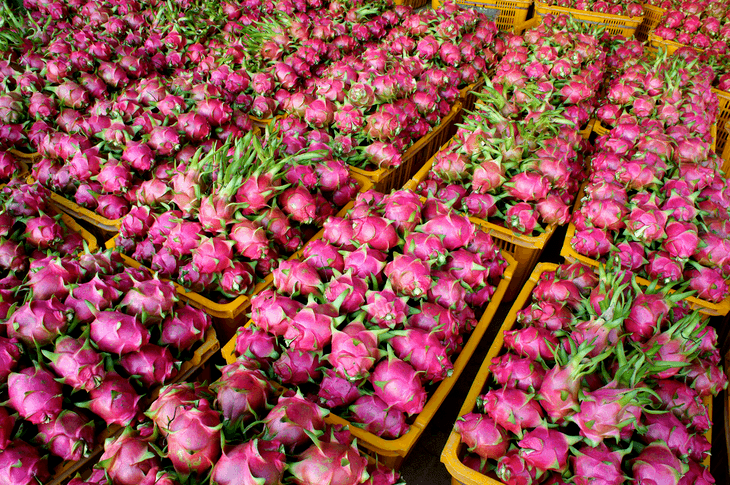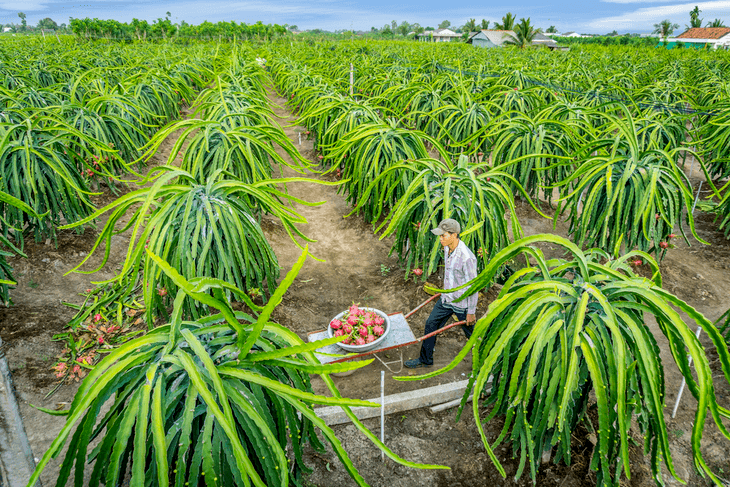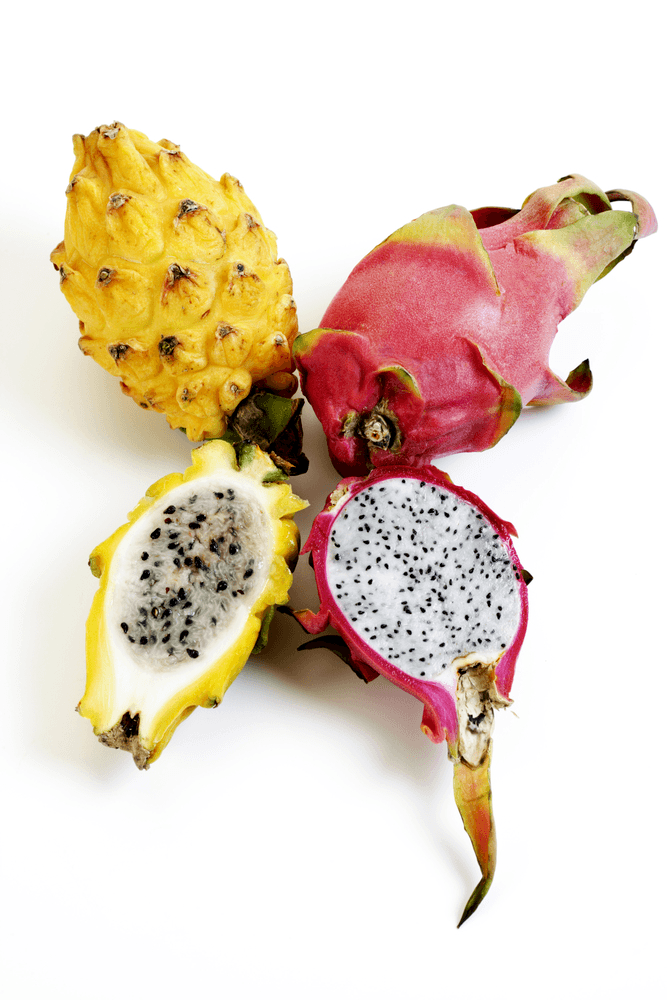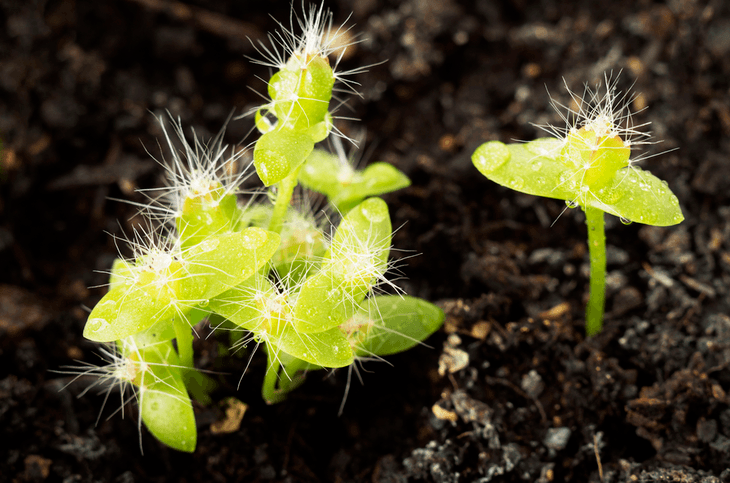The existence of dragon fruits has long been present in the country of Mexico. However, it may not be popular worldwide. Undeniably, the appearance of the fruit and its nutritional value captivated the attention of horticultural enthusiasts, gardeners, and even to health-conscious individuals.

As the demand for the fruit increases, so do the opportunities for farmers and vendors
The Discovered Potentials of the Fruit Crop
Pitaya, its original name, is a climbing, epiphytic, and perennial cactus. Hylocereus Undatus, its botanical name, refers to its habitat “Hulos”, which in Greek means forest.
Unlike other fruit crops, dragon fruit plants can start producing significant crops from 2 to 3 years and can reach its full production within 5 years. Overall, this species is among the largest around the world for it has a quick growth rate that can span up to 20 feet tall.
The crop enables an efficient water use due to its crassulacean acid metabolism (CAM). Thus, it is considered perfect to be grown commercially within dry regions. It is native to countries including Costa Rica, Guatemala, and Southern Mexico but is now grown throughout the subtropical and tropical countries in Asia. Apparently, the plant has now been propagated in 20 countries and is becoming abundant among the fresh fruit markets in certain states.
Apart from its nutritious value, it is also rich in antioxidants. As there is no doubt the plant shows promise, growers need to be cautious regarding the explants’ availability for a large-scale planting.

Vietnam is one of the world’s biggest growers of dragon fruits.
Propagation of Dragon Fruits from Seeds
While the most common method of propagating a dragon fruit is from cuttings, growing it from seeds is also considered as another effective method.
-
Advantages
In general, seed propagation is considered as a primary method of propagating plants of various species. Apparently, it is among the least expensive ways of producing a large number of plants from limited stock materials. Breeding programs that use dragon seeds are generally available.
According to a study from the Department of Fruit Horticulture, dragon fruit seeds have high viability. The viability rate of the seeds reaches up to 83% while the percentage of germination is around 76%.
Each species of plants has its own optimum range of temperature for germination. While other species have a narrow to limited range, dragon fruit seeds germinate in temperatures with a wider range.
-
Disadvantages
The prime drawbacks of growing a dragon fruit by seeds include failure in producing plants that are true to genetic diversity. Moreover, it accumulates a longer time of fruit production and is harder to propagate in comparison to cuttings.
How to Grow Dragon Fruit from Seed: Basic Procedure
1. Seed Preparation
To know how to grow dragon fruit from seed, you first need to consider the type of dragon fruit you are going to propagate. Basically, there are three types of dragon fruit:

Pitaya Roja and Pitaya Amarilla are both dragon fruits but with different color and taste.
Now, there are ready-to-plant dragon fruit seeds available on the market, but it is much better to prepare the seeds yourself. With a knife, cut the dragon fruit in half and take out the black seeds. The seeds should then be washed off with water to remove the excess pulp. Next, place them on a moist paper and have them dried overnight.
2. Climate needed for Dragon Fruit Propagation and Growth
While the fruit crop can survive in poor temperature variations, it is best to be cultivated in tropical climatic regions. Dragon fruits require a temperature of approximately 20°C to 30° c and an annual rainfall of about 50 cm.
3. Soil Requirement for Cultivation
Since the fruit species has flexible attributes, you can learn how to grow dragon fruit from seed on a wide range of soils. Basically, it can grow to many soil types including clay loam, sandy soil, or even in a hydroponic system. Generally, though, sandy cactus soil with good internal drainage and organic matter is the most favored soil to use in growing the crop. Soil with an optimal pH range of 5.5 and 7.0 have the appropriate alkalinity and acidity for your dragon fruit.
After you have chosen a soil for your dragon fruit, fill them in your preferred container e.g. small pots, germination tray, etc. Then, with your prepared and dried seeds, sprinkle them on the soil surface. As to how to grow dragon fruit from seed in larger lawns, you can use a broadcast spreader to do the work. Find a thin growing medium and allow the seeds to barely cover from them.

Since dragon fruits are climbing plants, supports should be erected while they’re still young.
4. Moisture for germination
Moisten the soil thoroughly with a sprayer and cover the plant container with a plastic wrap. Keep it in this condition until the seed germinates; generally, that takes around 15 to 30 days. When the seeds have already germinated, it is time for you to uncover the plastic wrap and transfer them to bigger containers when needed.

Dragon fruits that grow from seeds can germinate between 11 and 14 days.
5. Fertilizer for growth
To grow dragon fruit from seed over the time, they should only be fertilized using a balanced fertilizer. If located in a colder climate, do not fertilize the plant in winter or in cold temperature as the plant are not actively growing at this time. Compost or aged manure application can be used from time to time.
6. Water in moderation
Just like other succulents, watering them should be taken in moderation since these fruit species belong to the cactus family. Water them only if the condition of the soil has completely dried.
7. Fruit Pollination
Most dragon fruit varieties do self-pollination, but there is also a number that require cross-pollination. When your dragon fruits are not self-pollinating, you need to grow and place two or more dragon fruit crops together to have a cross-pollination. In order to know how to grow dragon fruit from seed through pollination effectively, allow the crops to do self-pollination during night time. Since the flowers of dragon fruit are nocturnal, their pollination relies on bats and moths.
Final Thoughts
The misconception that growing a dragon fruit from seeds has kept growers from trying out this method. All activities that require your effort can be hard, but once you have witnessed the result of your hard work, all will be worth it. Eventually, you can learn how to grow dragon fruit from seed easily while enjoying the whole journey.
Pin it!
